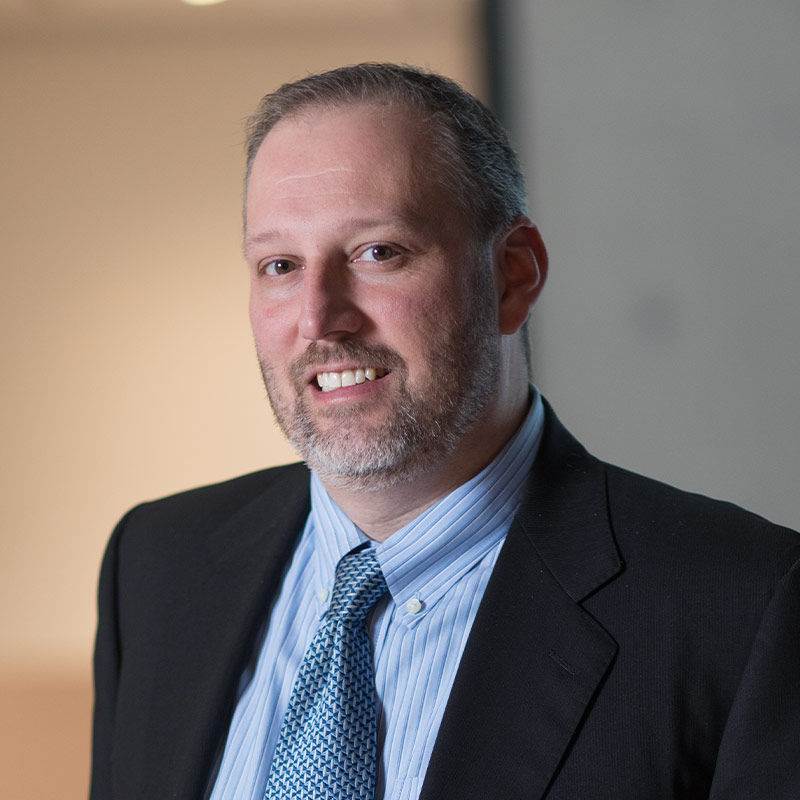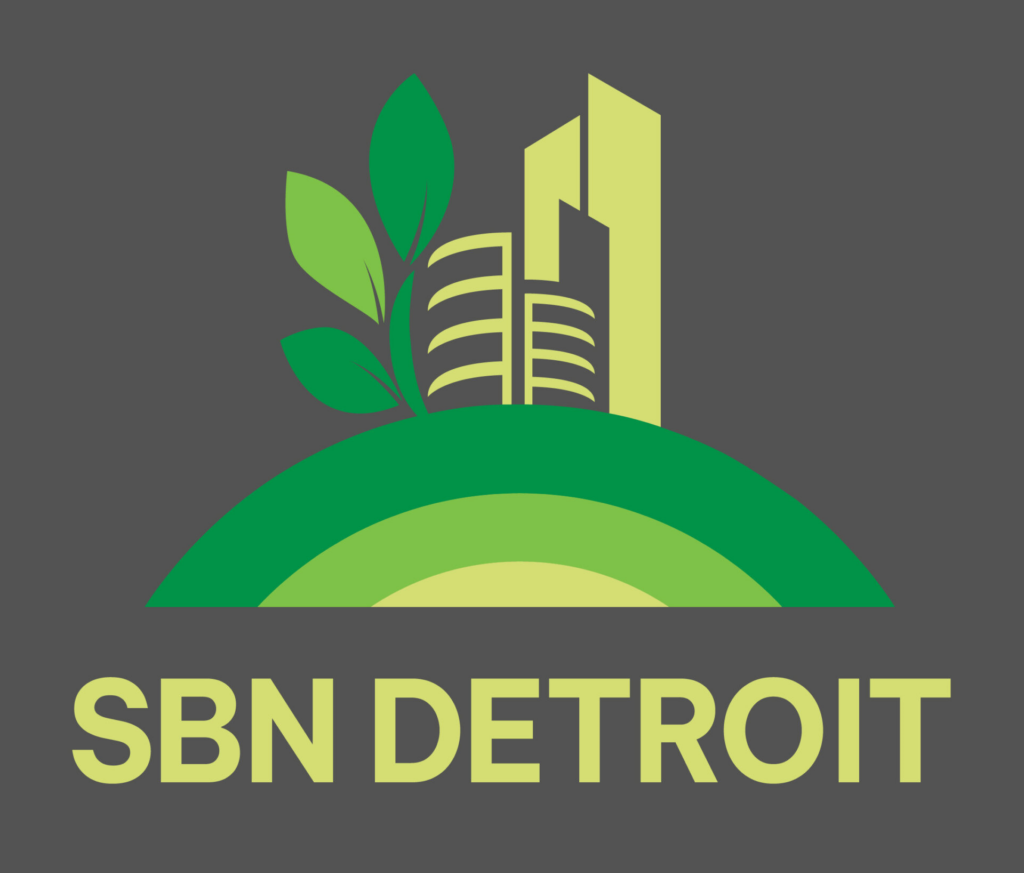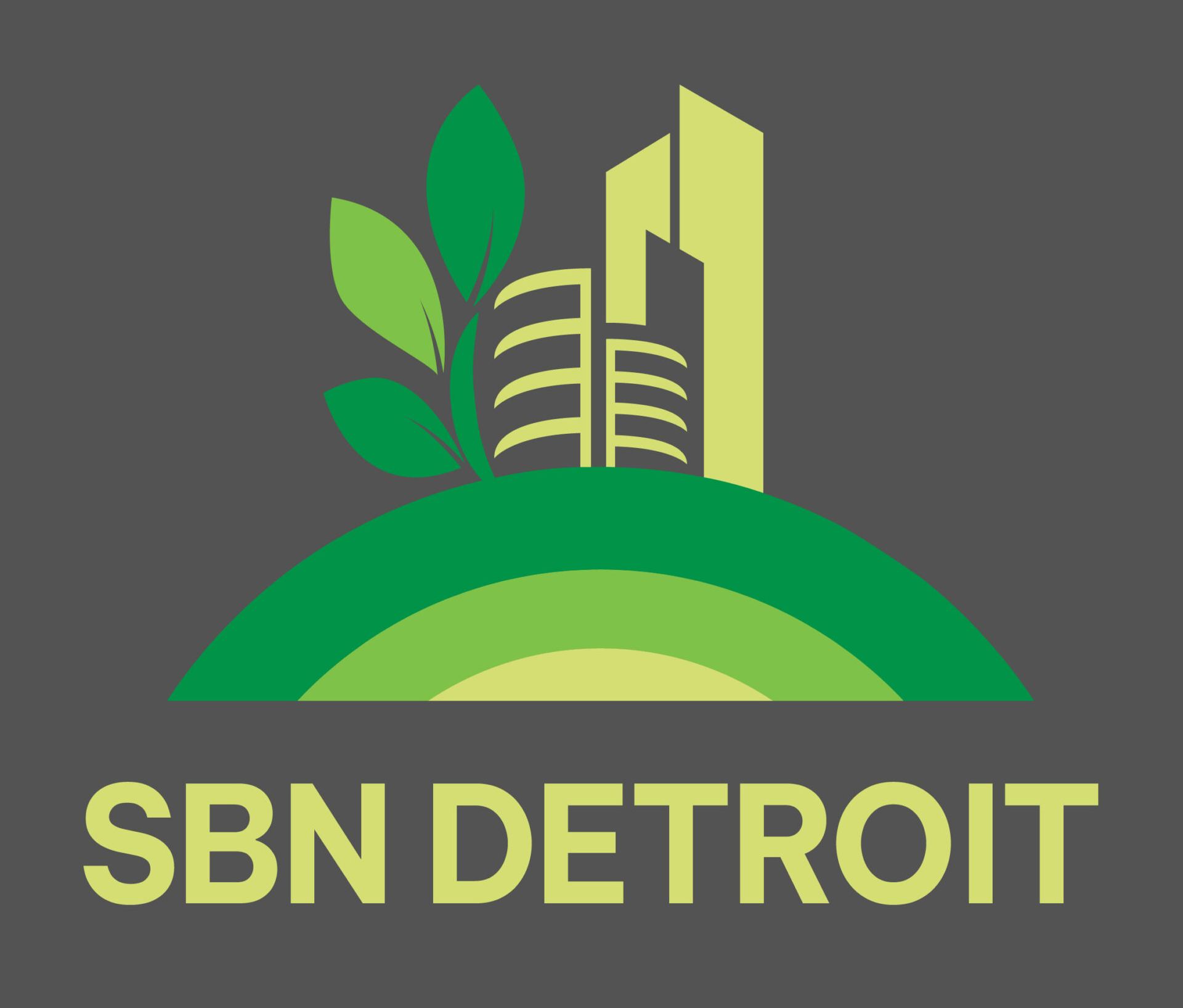Identifying Opportunities for Improved Efficiencies

The Energy Alliance Group of North America focuses on helping businesses implement sustainable energy solutions by identifying opportunities for improved efficiency and connecting clients to funding and technology. Based in Ann Arbor, Michigan, the company collaborates with commercial and industrial property managers to reduce energy consumption, enhance operations, and achieve long-term cost savings. SBN Detroit interviewed Scott Ringlein, founder, principal, and Chief Strategy Officer, about energy efficiency in Southeast Michigan, the role of financing and audits, and the importance of long-term thinking when it comes to sustainability. Q: What are the biggest energy efficiency challenges facing commercial and industrial buildings in Southeast Michigan? A: Misinformation is one of the biggest challenges. Every building has the opportunity to implement energy efficiency improvements, and there is money available to make it happen. These improvements offer a return on investment, but many building operators and owners either don’t believe the numbers or assume they don’t apply to them. The truth is, utility costs are ongoing and only getting higher, so the only way to gain control is to improve your building’s efficiency. Q: How can businesses identify when it’s time to upgrade or retrofit their energy systems A: Start by knowing what you have—what systems are in place, their expected lifespan, and their maintenance history. If you’re seeing frequent repairs and higher maintenance costs, it’s time to look at alternatives. Then evaluate how much more efficient a new system could be and what kind of energy savings it could deliver. If the numbers make sense, that’s the signal to move forward. Unfortunately, many businesses struggle with that last step—deciding to invest. Q: What misconceptions do you commonly encounter around cost recovery or energy savings? A: Many building owners don’t believe the projections—even when we show them data that supports a positive cash flow within one or two years. They tend to focus solely on ROI and forget that utilities never go away. You’re always going to pay for water, electricity, gas—whatever it is. And the utility companies have no vested interest in lowering your costs. So even if you’re skeptical, you’re still going to be paying more year after year unless you act. Q: How has the financing landscape changed for energy upgrades—especially for nonprofits or small businesses? A: We’ve been in this space since 2012, and the financing options today are better than they’ve ever been. Tax credits will come and go, but there are more long-term tools now than there were a decade ago. Michigan has been a leader in this area. Programs like Michigan Saves were the first of their kind in the U.S. We’re also a state approved for Property Assessed Clean Energy (PACE) financing, although it’s underutilized here compared to states like California. Still, the options are out there—you have choices, and you can take control. Q: What role do energy audits play in long-term planning, and how often should they be conducted? A: Audits are essential. You need to know where you stand—what equipment you have, how efficient it is, and what condition it’s in. It’s surprising how many clients have never even been on their own roof, where all the major equipment is housed. There are different levels of audits. A Level 1 audit gives you a basic understanding of what you have and where you’re spending your money. A Level 3 audit goes deeper and is useful when you’re preparing to make major decisions—like process changes or equipment replacement. A challenge is that many companies don’t take the time for a comprehensive audit until it’s too late. Smaller organizations may lack the staff, and larger ones may lose visibility due to scale. But without that baseline, long-term planning is difficult. Q: How do Southeast Michigan’s climate swings shape energy strategy in the region? A: As an organization, we don’t use climate change as the primary argument for doing the right thing. Climate change is happening, but we believe the conversation around energy efficiency should be happening regardless. You’re spending money on utilities – and there are better systems and more efficient ways to operate. We also need to think long-term. In the U.S., we don’t treat these upgrades as long-term investments the way they do in Europe or Asia. There, the systems are central to the building’s value and are maintained accordingly. Here, we often focus too much on short-term costs instead of building for performance and sustainability. Q: What advice do you have for businesses looking to reduce costs and improve operations going forward? A: Real-time monitoring of building systems from a central location gives you visibility and control. Beyond that, the cost of implementing technologies like LED lighting, heat pumps, solar panels, and combined heat and power (CHP) systems has become very feasible. There are also integrated systems now—solar light poles with battery storage and surveillance, for example—that operate independently of utility companies. The key is maintenance. These systems don’t last forever if they’re neglected. But with built-in monitoring and upkeep, they can be powerful tools for cutting costs and improving resilience. Be sure to subscribe to our newsletter for regular updates on sustainable business practices in and around Detroit.
The Inflation Reduction Act and More

The Inflation Reduction Act of 2022 marks the single largest investment in climate and energy in American history and provides potentially transformational opportunities for businesses and organizations of all sizes. On October 17, SBN Detroit hosted an informative discussion regarding these opportunities as well as those under the Infrastructure Investment and Jobs Act of 2021. The discussion focused on clean energy programs, available resources, workplace infrastructure, integrating different forms of funding, and partnerships. A list of resources is at the end of this article. The panelists were: Jerry Davis, professor, Ross School of Business, University of Michigan, oversees +Impact Studio and is faculty director of Business + Impact. Stacey Grant, principal and founder of Path Consulting, which offers equity-centered consulting support for communities, organizations, and nonprofits. Elizabeth Wallace, associate director, Michigan Community Programs, Elevate Energy Zachary Kolodin, chief infrastructure officer, State of Michigan The event was moderated by Nina Misuraca Ignaczak, founder, publisher, and editor of Planet Detroit, a digital media startup with a mission to produce quality climate, equity, health, and environmental journalism in the public interest. Takeaways follow: Kolodin: Michigan is a model for the country. Our main goals are to make sure the state gets internal justice for our projects and to bring in quality jobs. It is a great time to be in state government. Grant: The funding and resources are meant to benefit your communities. We need to advocate and make this happen, and we can do this in a data-driven way. Davis: The IRA is like gelato. There are thousands of programs and a lot of acronyms. There are also some great resources to look at that are specific to Michigan. It’s really important to familiarize yourself with the basics of what is out there. Grant: We are talking about funding that isn’t a cycle. It is rolling out through 2032. This is a moment, but we are also talking about longevity. If you are not in the game, you can still get in the game, and win the game. Kolodin: When we talk about workforce infrastructure in this space, we often miss the capital needed. When we look at skills, when we look at humans, we fail to look at access to capital and replicating the needed qualities for the replication of these skills in the workforce. Kolodin: The IRA creates obvious funding opportunities to create a low-interest capital fund to support entrepreneurs in this space. We need to look into how to create a fund like this and get access to capital. We need to get creative to get money where it needs to be. Wallace: Through the IRA, there is the greenhouse gas production fund. This is funding that is going to capitalize on these clean energy products. There is pro-bono technical assistance and legal support for communities and residents to try to alleviate the complexity if you are a business owner looking to do energy projects. Wallace: There are a lot of incentives for cities to partner with other cities, community organizations, and local businesses. Davis: It’s important to focus on mid-management. Commitment from senior leaders matters, but midlevel leaders and managers make the difference day-to-day. Michigan Saves is a great resource. I felt they were really helpful specifically for contractors because there are so many details in the IRA – and they simplified things greatly. Wallace: If you are looking to receive capital, there are a lot of different ways to get into the programs and the funding that is coming from the IRA. Keep an eye on what is going on locally and regionally and see where some of these things align with your organization and if you want to expand into it. Wallace: It’s a time to really collaborate with other organizations with similar goals and local, state, and regional governments to see what programs are coming down the line that may be beneficial for your organization. Grant: We are dealing with crises daily. A shift in power is required. I invite people who are in positions of power and who have access to information and resources to make themselves available. If you do not have that invitation, then you need to create that relationship. Click here for a list of resources. Be sure to subscribe to our newsletter for regular updates on sustainable business practices in and around Detroit.
Improved Green Loan Access for Detroit Small Businesses, Nonprofits, and Residents

In 2009, the State of Michigan created the nation’s first nonprofit “green bank” called Michigan Saves. The organization provides credit enhancements for credit unions and other lenders that reduce their loan default risk. In exchange, the lenders lower interest rates to help homeowners to pay for home improvements that reduce fossil fuel use, such as high-efficiency appliances like furnaces, central air, and water heaters. That means lower greenhouse gas emissions. Fast forward to 2022 at which time Michigan Saves secured a $2.5 million loan from the Kresge Foundation and developed the Detroit Loan Fund, fundamentally changing the loan process to approve more loans for residents, and now nonprofits and small businesses in Detroit. The fund eliminates credit scores as loan criteria, focusing instead on the borrower’s ability to make loan payments. In nine months, Michigan Saves through the fund has reached a $1 million milestone in loans. SBN Detroit talked to Todd Parker, vice president for Michigan Saves, about how the fund benefits residents, nonprofits, small businesses, the economy, and the environment. Q: How does this help nonprofits and small businesses in Detroit qualify for loans? A: Yes, especially in today’s financial environment with rising interest rates because the program provides 7% fixed-interest-rate loans and, therefore, financial certainty. The Detroit Loan Fund provides funding to Detroit nonprofits, community organizations, and small businesses for solar photovoltaic, battery storage, or electrification projects. The loans provide direct financial benefits in the form of utility savings and have longer terms than most commercial loans – seven to ten years. Customers may also be eligible for federal tax credits, which further improves the business case for the loan. In all, the loan provides great terms and affordable funding for those who have not been able to receive it before. Q: Is this model of lending unusual? A: Yes. Regarding the residential component, we are focusing on the ability of the loan recipient to pay, and not simply their credit score. Very few, if any lenders do this. Commercial lending is more competitive. A 7% loan in this environment that does not rely on credit criteria is innovative. We tried to develop these programs to fill a market niche and do something other lenders are not. Q: What was the path to creating these loans? A: These loans were developed because we analyzed the loan application denial rate and saw that Detroit homeowners are denied twice as much as others in Wayne County. This systemic inequity has been baked into the credit process for years. We knew something had to be done. Detroit has been underserved for years and a loan product like this opens many doors for the betterment of the city. The concept could work statewide as well. Q: Is the intention to go statewide with these loans? A: If funding comes through yes, we’d like to expand statewide. Rolling it out in Detroit allowed us to test it, and it’s been very successful. Q: From the residential perspective, how does assisting those who have been denied previously in getting loans for energy efficiency programs help the overall communities? A: The program is designed to target customers who have the highest energy burden. Those who are paying the most for energy relative to their income. Old homes lack insulation and lack quality windows and high-efficiency heating and air. The loans allow people to reduce their utility bills but also improve the health and safety and comfort of their homes. Providing comfort and savings is our goal. Q: It also helps the environment, yes? A: Yes. It certainly helps reduce greenhouse emissions and the carbon footprint. On the commercial side, the nonprofit and small business program targets solar PV (photovoltaic) systems, which allows them to generate energy and put it back on the grid as well as get bill credits, so there are environmental and financial benefits there as well. Q: What are the criteria for accessing these loans? A: The criteria are simple. Small businesses or nonprofits simply need to demonstrate they can pay by showing cash flow. We are less focused on traditional underwriting criteria. And more focused on a holistic view to make sure they have the means to repay. Q: What else do we need to know? A: The loan programs are contractor driven, meaning they are promoted through our network of authorized contractors. Also, we get referrals from utilities like DTE, community action agencies, or other community groups. Ultimately the nonprofit or business will then enter into a direct relationship with the lender. Q: How does the lending process with businesses impact nonprofits? A: These types of measures are being heavily incentivized through the Inflation Reduction Act. It’s an exciting component for nonprofits, who don’t have to pay taxes and therefore cannot take advantage of tax credits. The IRA legislation changed the game by saying nonprofits are eligible for direct pay equivalent of a tax credit when they invest in solar PV or battery storage systems. This changes the financial picture and opportunities dramatically and provides a direct financial incentive for nonprofits. Q: How do you see it impacting the future of Detroit and the economy? A: Our funding will be exhausted this summer. If we get additional funding to continue the program, we will be able to help significantly more homeowners. Currently, we are already approaching 250 projects. On the commercial side, once the federal government releases guidance and more funding, we expect nonprofits and businesses to package this funding with federal grants and tax credits to make the projects more financially attractive. The loans also help customers deploy energy-saving steps, and therefore save on utility bills while potentially generating revenue from tax credits. These savings free them up to apply that money elsewhere and put them in a better financial position. This goes for both residents and businesses. Also, we are working with Detroit-based contractors on installing these solar and energy improvements, so the money stays local. Be sure to subscribe to our newsletter for regular updates on sustainable


